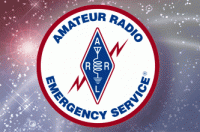|
Welcome,
Guest
|
TOPIC:
A Lighter, Better Pack to Power Our Troops 9 years 3 months ago #531
|
A wearable solar-energy system drastically reduces the weight that U.S. Marines carry into battle—and helps them survive.
See article and photos at: www.popularmechanics.com/technology/mili...kthrough-awards-2014 BREAKTHROUGH WHO USMC Expeditionary Energy Office (E2O),* Arlington, Va. FIELD Military Technology ACHIEVEMENT Lightweight solar power system for Marines on patrol. When a Marine suits up for a long patrol—say, five days— batteries and drinking water account for as much as 60 of the 90-plus pounds he carries. The water is vital. The batteries are equally important, because success in battle increasingly requires fast, coordinated, and precise movements at any given moment, and that kind of mobility calls for devices that eat up battery life: night- vision goggles, radios, GPS, a laptop, and more. It's a conundrum. The gear that enables swiftness creates a load that slows you down. The solution is the Marine Austere Patrolling System, or MAPS. The U.S. Marine Corps Expeditionary Energy Office (E2O) led the development of MAPS, a vest that strips away up to 50 percent of the weight a Marine normally bears above the waist. Consisting mainly of a solar- energy harvesting and storage system and water-purification unit, MAPS has been through several field tests, most recently in July. The majority of the Marines who used it were impressed. "If I were going to Afghanistan, I would want this," one team leader said. Troops without MAPS found themselves recharging batteries in fellow Marines' USB-equipped MAPS packs. "One of the tests involved four days of climbing up and down mountains in the Sierra Nevadas," says E2O's Capt. Anthony Ripley. "The Marines using MAPS were the only ones not to require battery resupply. Everyone benefited, from individuals in the test squad to the whole rifle company." MAPS uses a 9 x 14–inch photovoltaic panel and a rechargeable battery that weighs less than 3 pounds, up to 20 pounds less than the batteries that a soldier now carries. (The MAPS energy and water-purification components together weigh about 10 pounds.) A second pack can be swapped in to feed rechargeable AA batteries, which power weapon-mounted devices such as night-vision scopes. The panel works whether it's stashed in a transparent sleeve on the vest or taken out for maximum exposure to the sun. Issues remain—in extreme cold the water-purification unit freezes and the batteries fail to hold a charge, and in heavy shade the panels don't operate—but fixes are in progress. For instance, adding power-generating knee braces to provide electricity in the absence of sunlight. Over the next two years MAPS will undergo bulletproofing and joint Army– Marines testing to prepare it for use in battle. "Wearable energy is on its way to being combat-ready," Ripley says. "What we're trying to produce is a self-sustained war fighter." MAPS is a significant step toward that goal. |
|
Please Log in or Create an account to join the conversation. |
Time to create page: 0.118 seconds
